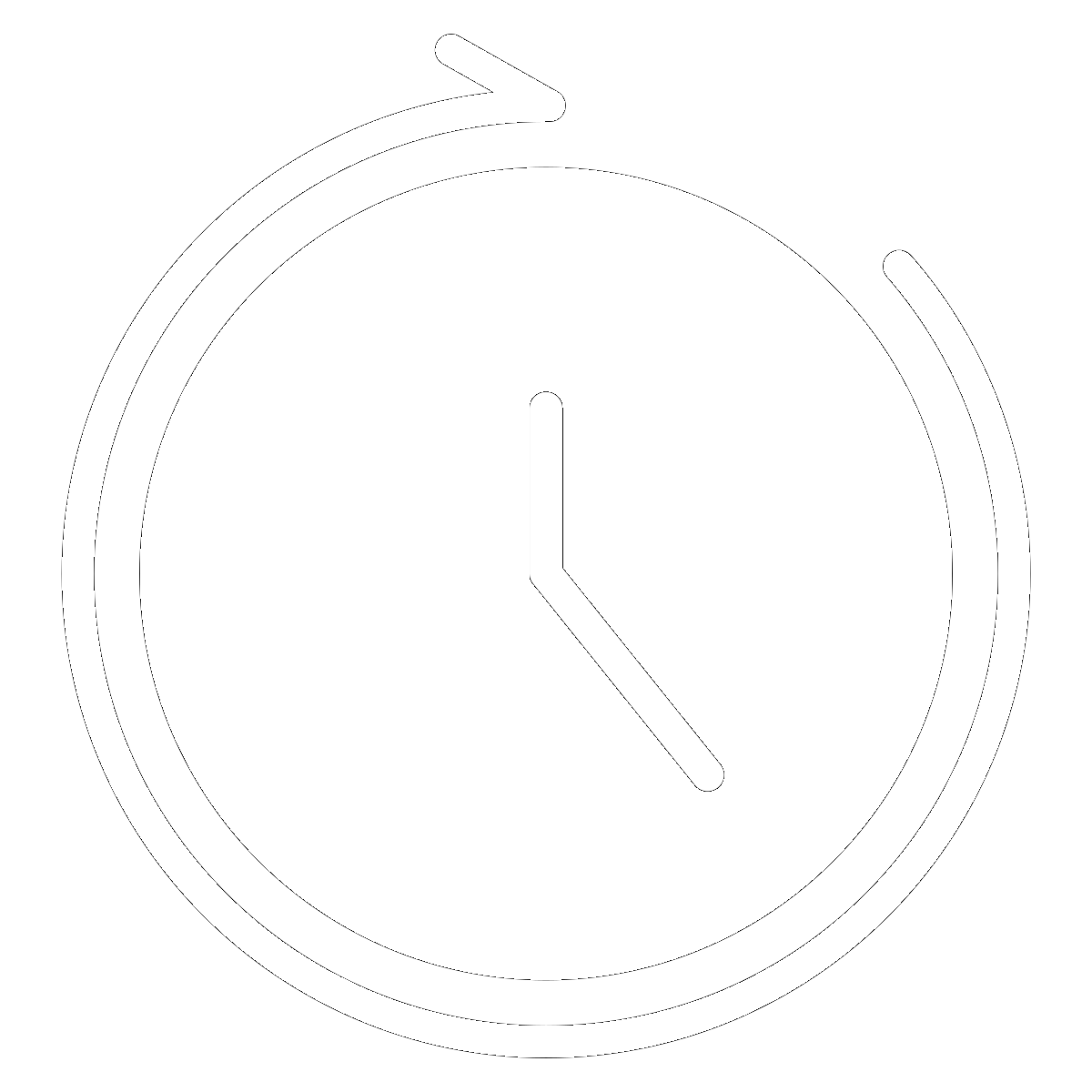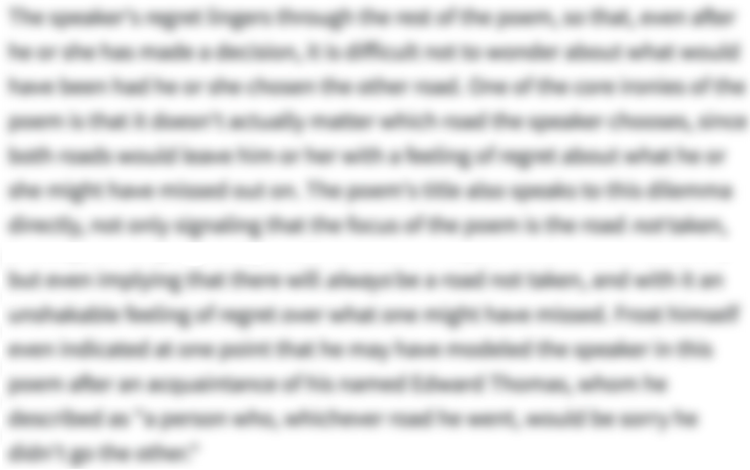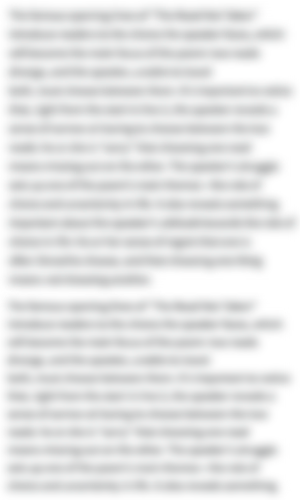-
“Out of Time” Introduction
-
"Out of Time" is Australian poet Kenneth Slessor's mournful, mystical reflection on time—here personified as capital-T "Time," a godlike figure who's nonetheless at the mercy of his own law. The poem's speaker feels helpless before Time's currents: like the ocean, Time sweeps along endlessly and impassively, rushing toward the future and ending every "lovely moment." Once, though, the speaker felt they had escaped this rush. Standing on a beach, they sank so deeply into the present moment that they were, for just a little while, "out of Time." In this poem, Time is an ocean that drowns everyone. But in some precious moments, people can feel as if they're sailing, not sinking. Slessor published this poem in his important 1939 collection Five Bells: XX Poems.
-
-
“Out of Time” Summary
-
I
The speaker declares that they've seen Time sailing along like a hundred ships at sunset, their sails spotted and speckled with air. They've seen Time shooting through the air like the brilliant yellow, harsh stripes of sunlight that penetrate the ocean in the harbor.
Time works like a wave, the speaker says; it buries the speaker in the ocean floor. Or Time works like a knife of bones, stabbing the speaker. "You coward, be brave," the speaker thought they heard their heart telling them. "The wave and the knife pass; Time flows like water, you don't!"
Disgustingly, endlessly, unthinkingly, Time picks the speaker up and pierces them through their bones and blood. In just that same way, the ocean moves the seaweed; the waves move over the weeds, but the weeds stay still.
The speaker tells Time: you've got to say goodbye, pick up your path, and leave this beautiful moment behind you.
II
Time, the speaker says, leaves every beautiful moment behind in its haste to end and change things, bless or murder them. Tomorrow calls out to Time breathlessly, longing for him to turn up already; lost beauties, by contrast, beg Time to stay put.
Time is always being chased by his fate. He has to open or close doors for that anonymous crowd that cries out in pain for birth to create new life, or for death to produce new ghosts.
Past calculation, beyond darkness and light, just over the cliff edge of the present moment, as stealthily as a woman having an affair might creep along, Time hurries out to meet its appointments a million years from now.
The speaker and this passing lovely moment simply laugh and let Time go past, leaning against Time's gleaming currents.
III
Leaning back against time's gleaming currents, the speaker once saw the birds launching into the air, their bodies the color of hail; they saw shadows streaming like water; they felt as if they had gotten themselves lodged in a delicious pause, escaping Time for a moment.
Outside the rush of time, feeling as if they were in the pale world you can see captured in the surface of a bubble, the speaker saw the sunlit beach, the bright porcelain-white sand, the glittering waters around the land reaching out into the sea.
This world was the world of the present moment, and the speaker was part of it, without a body or an age, beyond change and free of time. The speaker heard their heart say: "You fool, do you want to leave this beautiful place?" But it was no good: the current of Time pulled the speaker back in.
The seagulls fall, the speaker says; every living body dies and rots away. Time just goes on sailing past like a hundred boats.
-
-
“Out of Time” Themes
-

The Merciless Passage of Time
"Out of Time" follows a speaker as they grapple with the unstoppable, terrifying flow of Time. Standing beside the ocean, this speaker muses that Time is at once like a "wave" that sweeps past them and a "bony knife" that stabs them through the heart. Any escape from Time's relentless onward push can only be temporary; there's no escaping Time, and thus no escaping loss and death.
Time, in the speaker's eyes, moves on "vilely, continuously, stupidly": it's a blundering, blind force that tramples every "lovely moment" underfoot and leaves it behind without so much as looking back. To live in Time, in other words, means to live with constant and indiscriminate loss. Living in Time also means that people themselves get left behind. People, the speaker reflects, are like "seaweeds" under the "tide." The ocean of time flows past and leaves the seaweed stuck in one place, unable to follow Time on its long journey, just as Time flows past brief human lives and leaves them behind in order to "keep[] appointments with a million years," rushing past countless generations. No wonder that the speaker imagines Time as a "bony knife" as well as a wave: they feel that it "runs [them] through" even as it flows past them.
In the face of these sobering reflections, the speaker at last decides that the only way to bear Time is to "laugh, and let him go": to try to take Time's depredations lightly. Since there's no escaping Time's march (except, perhaps, for the briefest of spells, when one feels really absorbed in the present moment), all that the speaker can do is shake their head and accept that Time can do no other than move on, leaving them (and everything else) behind.
Where this theme appears in the poem:- Lines 1-14
- Lines 15-28
- Lines 39-42
-

The Magic of the Present Moment
For much of this poem, the speaker laments the fact that Time marches mercilessly on, leaving every "lovely moment" behind. But for just a spell, the speaker feels that they can escape Time's relentless momentum. Standing on a beach, looking at the sea, and gently accepting the fact that Time never stops, they find themselves "out of Time," living in "the moment's world"—in other words, inhabiting the present moment so fully that they feel as if they've stepped "out of the torrent" of Time's tides for just a little while. Such transcendent moments, the poem suggests, can be among the richest and most beautiful of experiences, even though there's no escaping Time forever.
It's only when the speaker gets comfortable with the idea that Time won't stop for them and chooses to "lean[] against the golden undertow"—that is, to just pause gently and let Time flow past—that they manage to get "out of Time" for a second. Gazing around them at the beauties of the beach, with its "flow[ing]" shadows and "climb[ing]" seabirds, they feel as if they've entered "the fainter land / Lensed in a bubble's ghostly camera." In other words, they've entered the world of the immediate present, the scene you'd see reflected in a bubble in the fleeting moments before it pops. Things flow and move here, but they're also captured as if in a snapshot.
Standing in this fragile world, the speaker feels like "part" of it all, and thus feels "changeless and made free": if this moment feels timeless, then they, too, are a timeless part of the scene, above Time's erosions. It's a joyous experience. Alas, the speaker can't stay here forever. Even though they hear their heart cry, "'Fool, would you leave this country?'", they ultimately have no choice but to return to the flow. Still, their moment "out of Time" suggests that an escape from the anxieties of loss and death might only be found in what's right in front of a person.
Where this theme appears in the poem:- Lines 29-38
-
-
Line-by-Line Explanation & Analysis of “Out of Time”
-
Lines 1-4
I saw Time ...
... under Harbour's hair.As "Out of Time" begins, a speaker standing in a "Harbour[]" and looking out to sea has a sudden striking vision of "Time." They see "Time flowing like a hundred yachts," a simile that suggests a complicated kind of movement:
- On the one hand, Time is moving like a parade of sailboats: individual moments are passing by in stately procession, "fly[ing] behind the daylight" as if trying to catch up with the setting sun.
- On the other, time is "flowing" continuously, all in one big motion, more like the sea that carries the boats than the boats themselves.
This complex vision might be inspired by the speaker's surroundings. Their vision of those metaphorical yachts with sails "foxed with air" presents a vivid image of sails that appear spotted and speckled ("foxed") as they ripple in the wind—just the sort of thing the speaker might actually be observing.
Alongside Time's flowing, sailing motion, the speaker perceives Time's power to "pierc[e]." As the speaker puts it in another simile, Time stabs right through things:
[...] like the quince-bright, bitter slats
Of sun gone thrusting under Harbour's hair.In other words, the sun pierces the waters of the harbor (here imagined metaphorically as the harbor's weaving "hair") in bars as sharp and golden as a quince (a pear-like fruit). That imagery feels at once lovely and harsh, touching the tongue as well as the eye: the piercing sunlight is golden and gorgeous, but "bitter," too.
The touch of time, the speaker will go on to suggest, is just as bright and bitter. The idea that Time (which the speaker will personify as a godlike male figure) can flow, sail, and stab captures the alarming feelings the speaker struggles with as they gaze at the water: that Time is swishing past them, leaving them behind, and killing them, all at once.
"Out of Time" will explore these ideas over the course of three sections, each of which takes the form of an English sonnet. That means:
- Each of the poem's sections uses 14 lines, rhymed ABAB CDCD EFEF GG.
- The poem is written in iambic pentameter—lines of five iambs, metrical feet with a da-DUM rhythm, as in "Or Time, | the bo- | ny knife, | it runs | me through."
Kenneth Slessor's use of this traditional shape invites Time into the poem in yet another way. The sonnet has a history reaching back to the Middle Ages. Perhaps in turning to the form here, the poet hopes to drop an anchor in the tide of Time.
-
Lines 5-12
So Time, the ...
... the weeds remain.

Unlock all 366 words of this analysis of Lines 5-12 of “Out of Time,” and get the Line-by-Line Analysis for every poem we cover.
Plus so much more...
Get LitCharts A+ -
Lines 13-14
Time, you must ...
... at your back! -
Lines 15-22
Time leaves the ...
... to be ghost. -
Lines 23-28
Out of all ...
... his golden undertow. -
Lines 29-36
Leaning against the ...
... waters and peninsula— -
Lines 37-42
The moment's world ...
... a hundred yachts.
-
-
“Out of Time” Symbols
-

The Ocean
The ocean at which the speaker gazes becomes the poem's most prominent symbol for time itself. Just like the ocean rushes over seaweed, the speaker reflects, time rushes on over people, leaving them rooted in one little spot while it hurries endlessly by. The ocean's vastness, ceaseless motion, and permanence all capture time's qualities and contrast them with the qualities of tiny, mortal human beings. Looking at the huge, eternal ocean might make a person feel pretty small and inconsequential; so does looking straight at Time.
The ocean's paradoxical nature—it's always changing and always the same—also makes it a good reflection of Time, which likewise always behaves in the same way even as it churns up the world it runs through.
Where this symbol appears in the poem:- Lines 1-2: “I saw Time flowing like a hundred yachts / That fly behind the daylight”
- Lines 3-4: “the quince-bright, bitter slats / Of sun gone thrusting under Harbour's hair”
- Line 5: “So Time, the wave, enfolds me in its bed,”
- Line 8: “Time flows”
- Line 11: “So water bends the seaweeds in the sea”
- Line 28: “Leaning against his golden undertow”
- Line 33: “Out of the torrent”
- Line 40: “I was taken by the suck of sea”
-
-
“Out of Time” Poetic Devices & Figurative Language
-
Simile
The speaker's similes link "Time" to the seascape. The same simile opens and closes the poem: the speaker sees "Time flowing like a hundred yachts." At first glance, this simile simply presents the grand vision of a procession of ships, each moment a bright-sailed boat flitting past. But the striking verb "flowing" connects those imagined yachts to the ocean they sail on. Time is both boat and current here, a parade of passing moments and the medium that carries those moments at once.
The important image of Time as seawater recurs when the speaker muses that Time "drives through bone and vein" in just the same way as "water bends the seaweeds in the sea." Time rushes over people and leaves them behind, in other words: the "weeds remain" where they are, and people stay planted in their own little patch of time, unable to follow very far into the future.
The speaker also imagines time "piercing" the world "like the quince-bright, bitter slats / of sun" that shoot through the waters of the harbor. The vision of Time as "quince-bright" sunlight raises images of golden ripeness (a quince is a yellow, pear-like fruit). But those "slats" (or bars) of sun are also "bitter" as a crabapple. In this image, Time can spear you through with simultaneous beauty and pain.
For rare, small moments, though, people might be able to step "out of Time" and into the present moment, fully inhabiting what's right in front of them. When the speaker has such a moment, they reflect that they feel as if they're standing in something "like the fainter land / Lensed in a bubble's ghostly camera." Inhabiting the present, in other words, is like living in the reflections on the surface of a bubble, existing in a fragile, beautiful now-ness. That simile prepares readers for what happens next: bubbles, inevitably, pop, and the speaker can only stay "out of Time" for so long before the "suck of sea" pulls them right back into the current.
The poem's final simile is the only one that moves away from the seashore. That makes sense: it's the simile the speaker uses to describe how Time reaches far, far into the future, beyond the time when the shore the speaker stands on even exists. The speaker imagines Time tiptoeing through the dark "blindly and softly, as a mistress might" in order to keep his "appointments with a million years." This image of Time as a woman creeping toward a meeting with her lover suggests that there's something furtive and stealthy about the way Time moves. Time is somehow in love with the distant future, but like a "mistress" having an affair, it's not loyal to that future. When it reaches a million years from now, it'll still be creeping toward a meeting with a million years from then.
Where simile appears in the poem:- Line 1: “I saw Time flowing like a hundred yachts”
- Lines 3-4: “piercing, like the quince-bright, bitter slats / Of sun”
- Line 11: “So water bends the seaweeds in the sea”
- Lines 25-26: “Blindly and softly, as a mistress might, / He keeps appointments with a million years”
- Lines 33-34: “like the fainter land / Lensed in a bubble's ghostly camera”
- Line 42: “And Time flows past them like a hundred yachts”
-
Personification


Unlock all 338 words of this analysis of Personification in “Out of Time,” and get the poetic device analyses for every poem we cover.
Plus so much more...
Get LitCharts A+ -
Metaphor
-
Parallelism
-
Repetition
-
Imagery
-
-
“Out of Time” Vocabulary
Select any word below to get its definition in the context of the poem. The words are listed in the order in which they appear in the poem.
- Yachts
- Foxed
- Slats
- Quince-bright
- Enfolds
- Skulker
- Vilely
- Quench
- Entreats
- Mistress
- Undertow
- Meniscus
- Torrent
- Lensed
- China
- Peninsula
Yachts-
(Location in poem: Line 1: “I saw Time flowing like a hundred yachts”; Line 42: “Time flows past them like a hundred yachts”)
Swift sailing boats. (Pronounced "yots.")
-
Form, Meter, & Rhyme Scheme of “Out of Time”
-
Form
"Out of Time" is a sonnet sequence. Each of its three sections sticks to the traditional form of an English sonnet:
- Each contains 14 lines.
- Each is written in iambic pentameter (lines of five iambs, metrical feet with a da-DUM rhythm (as in "So Time, | the wave, | enfolds | me in | its bed").
- Each uses an ABAB CDCD EFEF GG rhyme scheme that divides it into three quatrains (four-line passages) and a closing rhymed couplet.
Each of these sonnets builds on the one before it: the last line of one sonnet becomes the first line of the next, making the final G rhyme of one sonnet into the A rhyme of the next section. For example, the final line of the first sonnet it "And leave this lovely moment at your back!"; the first line of the next is "Time leaves the lovely moment at his back[.]"
The three poems thus become part of one cohesive and evolving whole—a fitting effect in a poem about time's ceaseless, oceanic churning and change.
The sonnet—a form with a history stretching all the way back to the Middle Ages—also works like an anchor in that sea of time. While the speaker feels they can't escape time (or at least, not for long), the poem's shape reaches out to the tradition of Petrarch, Shakespeare, Wordsworth, and Barrett Browning (among countless others), hinting that art might be one way to step "out of Time."
-
Meter
"Out of Time" is written in iambic pentameter. That means that each of its lines uses five iambs, metrical feet with a da-DUM rhythm. Here's how that sounds in line 5:
So Time, | the wave, | enfolds | me in | its bed,
This elegant rhythm is one of the most common meters in English-language poetry, familiar from the works of writers like Shakespeare and Milton. Slessor's use of it here makes a lot of thematic sense. This poem about time is linked through its meter to old poetic tradition; even as the speaker mourns Time's remorseless passing, they reach out to the past. And a steady iambic da-DUM pulse, as many readers have observed over the years, sounds a lot like a human heartbeat, ticking its way unstoppably toward the grave.
Like a lot of poets writing in iambic pentameter, Slessor sometimes switches the rhythms up a little for effect. For just one example, the rhythm changes in line 16:
Eager | to quench | and ri- | pen, kiss | or kill;
The first foot there ("Eager") is a trochee, the opposite foot to an iamb, with a DUM-da rhythm. Fittingly enough, it makes this line seem to lunge forward eagerly.
-
Rhyme Scheme
"Out of Time" is built from three sonnets, each using the traditional English sonnet rhyme scheme. That pattern runs like this:
ABAB CDCD EFEF GG
Here are the first stanza's rhymes, for example:
[...] yachts [A]
[...] air; [B]
[...] slats [A]
[...] hair. [B][...] bed, [C]
[...] through. [D]
[...] said. [C]
[...] you!" [D][...] stupidly, [E]
[...] vein, [F]
[...] sea, [E]
[...] remain. [F][...] track, [G]
[...] back! [G]In sticking to this traditional pattern, Slessor links a poem about time to a long poetic heritage, reaching out to the sonneteers of the past (like Shakespeare and Keats) even as he laments that one can't escape time's dreadful momentum.
This pattern of rhyme also helps Slessor to interweave the three sections of the sequence. The last G rhyme of each sonnet becomes the first A rhyme of the next, an effect that creates a fitting sense of continuity, interconnection, and evolution.
-
-
“Out of Time” Speaker
-
The poem's speaker is a moody, melancholy, and occasionally mystical sort of person. Gazing out at the ocean, they at first seem appalled by the sad realization that Time just keeps flowing on; they feel Time stabbing at them like a "bony knife," or snatching one "lovely moment" after another from under their nose.
The same ocean that gives them these thoughts, though, also gives them a momentary escape from Time's relentless push. For just a little while, the speaker manages to "laugh, and let [Time] go," and in so doing perceives a world "out of Time": a timeless vision of the present moment, in which the "lighted beach" and the hovering seagulls seem eternal.
Such transcendent moments can't last, the speaker sadly reflects; the "suck of sea," the remorseless flow of Time, always gets you in the end. But though they return to the gloomy conclusion that "the gulls go down, the body dies and rots," and Time just carries on, they've had a meaningful glimpse of timeless beauty.
Readers might fairly interpret this poem's speaker as Kenneth Slessor himself. Much of Slessor's verse reflected on his complex personal relationship to time, loss, and the sea. He lost a dear young friend to drowning, an experience that forever linked the sea and grief in his mind.
-
-
“Out of Time” Setting
-
"Out of Time" takes place by the sea. The speaker looks out at the "lighted beach," carefully observing its hovering gulls, its "china sand" as white as porcelain, and its "quince-bright" streaks of sunlight, yellow as ripe fruit. This beautiful day, alas, only reminds them that the currents of Time, like the currents of the ocean, snatch away every "lovely moment" as soon as it comes.
Nevertheless, the beach also offers the speaker a vision of permanence and transcendence. For just a while, gazing at the "glitters and waters" around them, the speaker feels as if they've stepped "out of time" and into an eternal present moment. Paradoxically enough, the poem's ocean thus ends up symbolizing both transience and permanence.
The poem's reference to the "Harbour" suggests that this poem, like many of Slessor's, is set in Australia's Sydney Harbor, near which Slessor spent much of his life.
-
-
Literary and Historical Context of “Out of Time”
Literary Context
Kenneth Slessor (1901-1971) was one of Australia's most influential poets, known for steering Australian poetry away from the "bush ballads" (a genre of poetry that depicted life in undeveloped parts of Australia in simple, rhyming verse) and towards the experimental verse of modernism.
Modernism, which arose in response to the rapidly shifting landscape of the early 20th century, celebrated artistic experimentation and moved away from rigid formal constraints. Slessor's evocative imagery and experimental techniques are in keeping with modernist poet Ezra Pound's injunction to "make it new." At the same time, this particular poem relies on one of the most traditional forms around: the sonnet. Sonnets have a history stretching back centuries and are marked by the very rigid formal constraints that modernists rebelled against. Slessor experiments with the form here by stacking three sonnets on top of each other and allowing each to build on the last. This creates a sense of a long yet cohesive poem that is at once ever-evolving and circling back on itself, ending, in a way, where it began.
While Slessor often wrote about world-weariness and disillusionment, he also celebrated the beauty of living in the moment. Even his heaviest subject matter is often tempered by irony and an insistent love of life.
Slessor spent most of his life living near the sea in Sydney, Australia, and his poems frequently feature ocean imagery. This poem was first collected in Slessor's 1939 book Five Bells: XX Poems, a book whose title poem became one of the most famous works of Australian verse.
Historical Context
Slessor wrote this poem during the early 20th century, a time of massive societal change. Technological advancements meant that more people had access to cars, telephones, and radios; society was increasingly urbanized, labor was increasingly mechanized. But shifting social norms and the horrific violence of World War I left many disillusioned with so-called "progress"—a feeling compounded by the rise of fascism and the outbreak of World War II in the 1930s.
Slessor himself was a teenager when World War I began and ended, and he went on to become an official war correspondent during World War II. "Out of Time," published in 1939, doesn't allude to any of these events directly. However, its melancholy visions of Time pressing ceaselessly into the future (and its yearning for a transcendent escape from Time's flow) capture a very contemporary feeling of sorrow, disillusionment, and longing for times past.
-
More “Out of Time” Resources
-
External Resources
-
A Brief Biography — Learn more about Slessor's life and work via the Poetry Foundation.
-
Slessor's Influence — Read an article that discusses Slessor's influence on Australian poetry.
-
An Appreciation of the Poem — Check out a short essay from the Sydney Review of Books discussing the poem's backdrop.
-
Slessor's Papers — Explore Slessor's correspondence, diaries, and manuscripts through the National Library of Australia.
-
-
LitCharts on Other Poems by Kenneth Slessor
-








